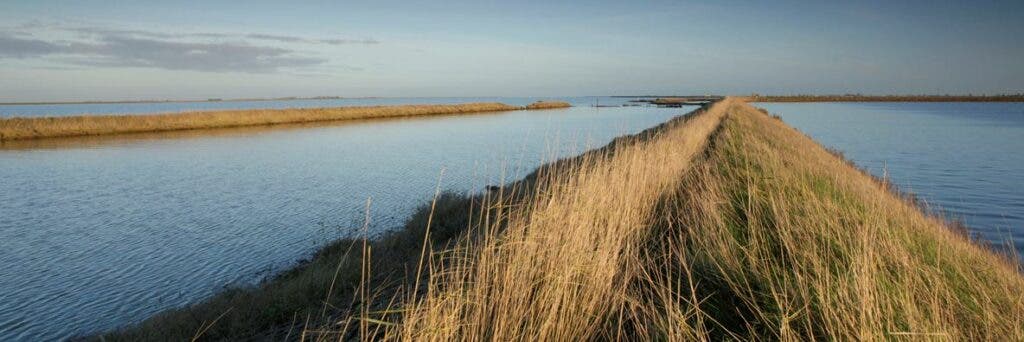When tunnels were made for a new subway line in London, millions of tons of clay were taken out. That land was put to good use.

London’s newly inaugurated Elizabeth line not only allowed commuters to start taking high-speed trains from on a new line but also created a new sanctuary for thousands of birds using the 3.5 million tons of earth dug up during the construction of the stations and tunnels to create a set of lagoons, islands, and bays.
What was before a barren landscape with not much around is now Europe’s largest man-made nature reserve, run by the Royal Society for the Protection of Birds (RSPB). The site is a vital habitat for birds, such as avocets (Recurvirostra), spoonbills (Platalea), little egrets (Egretta garzetta), and marsh harriers (Circus aeruginosus).
A new natural reserve
The new bird reserve, named Wallasea Island Natural Reserve, or Jubilee Marsh, is located in Wallasea Island, Essex, and spans over 400 acres (160 hectares). The area used to be a safe haven for animals and an important part of the Essex landscape. But Britain’s intense agriculture and coastal erosion have cut big chunks of the marsh. This effort will help nature reclaim some of its territory.
“The site sits within an internationally important estuary, close to the Thames Gateway – one of Europe’s largest economic regeneration areas. It has created a huge expanse of habitat for wildlife and birds, whose existing habitats are being damaged and lost because of climate change,” a recent statement from RSPB about the project reads.
The Jubilee Marsh is made up of fish pools, grasslands, lagoons, mudflats, and marshes where birds can catch food and make nests. These features were built in a way that protects the birds from the rising water caused by climate change. The soil from the subway was used to create long and rising shores that won’t inundate any time soon.
It was originally a patchwork of salt marsh islets that were drained to create farms for wheat, rapeseed, and barley. However, most of the land is below sea level and the fields had to be protected by a sea wall. At the start of this century, the farmer wanted to sell as the wall had to be repaired, so RSPB agreed to buy the land to better protect it.
RSPB then signed a deal with the company behind the new subway line to use the soil from the excavations to develop a reserve at Wallasea. Seven million tons of soil were excavated and about half of that was delivered by the river to Wallasea. Over 1,500 shipments were made, using a conveyor belt to carry the soil from shore to a depot.
“Managed realignment is an intertidal habitat creation technique, using breaches (holes) in the sea wall to allow the sea in to recreate intertidal habitats – the habitats you get are dependent on the height of the land being flooded. This option seemed perfect for Wallasea Island,” a statemement from RSPB about the project reads.
The result was the creation of a massive wetland where tens of thousands of migratory birds go for lodging. Already, the positive impact is noticeable. Over 150 pairs of avocets bred in the reserve last year, for example, making Wallasea one of the largest colonies of these black and white birds in the UK, a bird that has recently been close to extinction but is now slowly recovering.
This project showcases that engineering works don’t need to have a negative impact on wildlife — or at the very least, some of this negative impact can be offset by creating new habitats and possibilities for wildlife. Our man-made expansion doesn’t necessarily need to cut away into nature.


